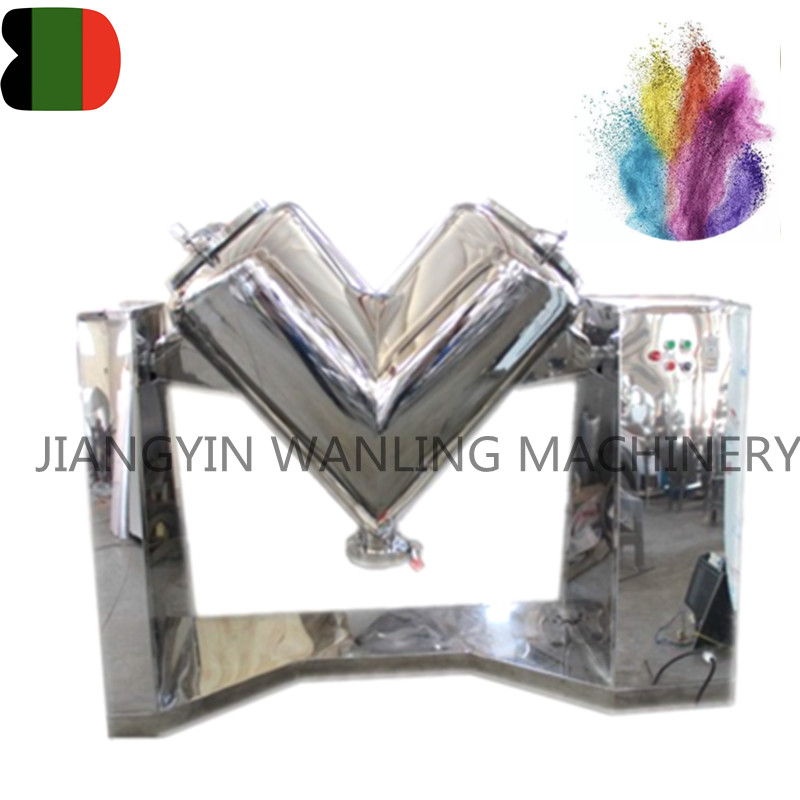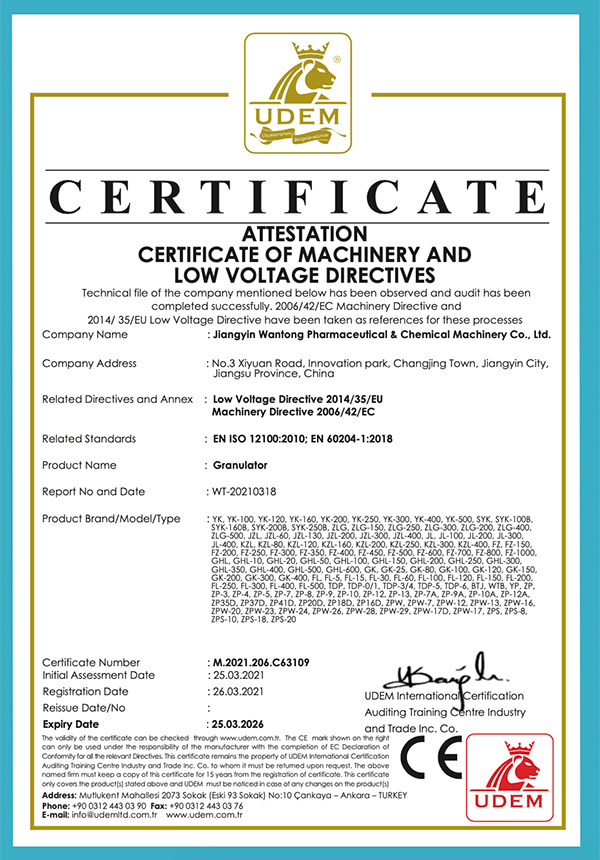V Mixer Hersteller
-


WLV V -Form -Food -Pulvermischmaschine
Diese V -Mischer -Maschine ist anwendbar, um Trockenpulver und Granulatmaterial für die Apotheke und andere relative Branchen zu mischen.... -

WLV Edelstahl V -Kegelmischmaschine
Der Edelstahl-V-Kegelmixer hat viele Modelle, der Smalles One ist WLV-200-Mixer, seine Kapazität beträgt 40 kg pro Charge, dh der Mixer k... -


WLV V -Kegelmixer -Mixermaschine
Diese V -Kegelmixer -Maschine ist eine Mischmaschine vom Typ Edelstahl, die in der chemischen und pharmazeutischen Food -Industrie verwen...
Der V -Mixer ist ein Grundmixer, der für kleine Produktion geeignet ist. Dieser Mixer ist einfach zu bedienen, einfach in der Struktur und leicht zu reinigen. Der V -Mixer eignet sich zum Mischen von Pulver und Partikeln nach dem Trocknen oder Zerkleinern. Der V -Mixer wird in den Bereichen Pharma-, Lebensmittel, Chemikalie und andere Branchen häufig verwendet.

Über uns
Ehre
-
 Ehre
Ehre -
 Ce
Ce
Nachricht
-
Branchennachrichten 2025-10-09
A Doppelkegelmixer hat im Vergleich zu deutliche Vorteile und Einschränkungen ...
Mehr anzeigen -
Branchennachrichten 2025-10-01
Elektrisch angetrieben Tabletttrockner Voderteile: Präzise u...
Mehr anzeigen -
Branchennachrichten 2025-09-22
BUndmischer gehören zu den vielseitigsten industriellen Mischgeräten. Sie sind für die effiziente...
Mehr anzeigen -
Branchennachrichten 2025-09-19
Mühlenausrüstung spielt eine entscheidende Rolle in Branchen wie der Landwirtschaft, dem Bergbau ...
Mehr anzeigen
Branchenwissen Expansion
How does a V mixer handle materials with different properties?
A V mixer, also known as a twin-shell blender, is designed to handle materials with varying properties effectively due to its specific design and operational features. Here’s how it manages materials with different properties:
Geometric Shape:The V-shaped design of the mixer creates a high degree of inter-meshing of particles as the vessel rotates. This ensures a thorough blend of materials with different sizes, shapes, and densities.
Tumbling Action:The V mixer operates by tumbling the materials back and forth, which promotes a homogenous mix. The constant tumbling action helps to break down agglomerates and ensures that materials with different flow characteristics are evenly distributed.
Axial and Radial Mixing:The V mixer facilitates both axial and radial mixing. Axial mixing occurs along the length of the V, while radial mixing happens as the materials move from the outer walls towards the center. This dual mixing action is particularly effective for blending materials with varied particle sizes and densities.
Variable Speed Control:Many V mixers come with variable speed controls that allow operators to adjust the rotation speed. This is crucial for handling materials with different properties, as some materials may require slower speeds to prevent segregation or degradation, while others might need faster speeds for efficient blending.
Inclined Shell Design:The inclined shell design ensures that gravity assists in the mixing process. As the mixer rotates, materials naturally flow into the junction of the V, where they are subject to continuous mixing. This is beneficial for materials with differing flow properties.
Internal Baffles:Some V mixers are equipped with internal baffles to enhance the mixing process. Baffles can disrupt the flow of materials, ensuring that even cohesive or sticky materials are adequately mixed and do not adhere to the vessel walls.
Adjustable Fill Levels:The fill level of the V mixer can be adjusted to optimize the mixing process. Lower fill levels can help in blending materials with significant differences in bulk density by providing more space for the materials to move and intermix.
Gentle Mixing:The tumbling action of the V mixer is relatively gentle compared to other types of mixers, such as high-speed impellers. This makes it suitable for fragile materials that might break down under more aggressive mixing conditions, as well as for maintaining the integrity of particles with different sizes and shapes.
Material Compatibility:V mixers are constructed from materials that are compatible with a wide range of substances. Stainless steel, for example, is commonly used for its non-reactive properties and ease of cleaning, making it suitable for blending ingredients with different chemical properties.
Discharge Mechanism:The design of the discharge mechanism in a V mixer ensures complete emptying of the mixed materials, preventing any cross-contamination between batches. This is particularly important when handling materials with different properties to ensure a consistent and homogenous blend in subsequent batches.
A V mixer handles materials with different properties through its unique V-shaped design, tumbling action, adjustable speed and fill levels, internal baffles, and gentle mixing process. These features collectively ensure efficient and homogenous blending of diverse materials.




